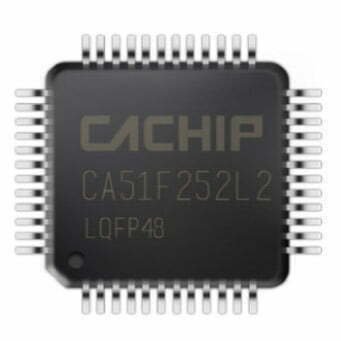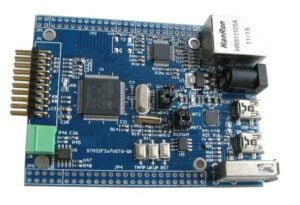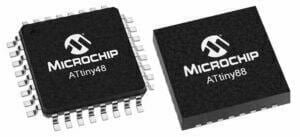Axcelerator AX1000 Microcontroller
The Axcelerator AX1000 is a microcontroller designed by Microsemi Inc. It is a 32-bit ARM Cortex-M3 processor with up to 512KB of program memory and 64KB of SRAM. It features multiple communication interfaces and a rich set of on-chip peripherals, including ADC, CAN, I2C, SPI, UART.

AX1000 Features
- A single-chip, non-volatile solution
- up to 100% resource utilization with 100% pin locking
- 1.5 V core voltage for low power consumption
- with a footprint compatible package
- multi-standard I/Os including
- 1.5 V, 1.8 V, 2.5 V and 3.3 V mixed voltage operation
- bank-selectable I/Os, 8 banks for each chip
- single-ended I/O, LVTTL, LVCMOS,
- 3.3V PCI and 3.3 V PCI-X
- differential I/O standards such as LVPECL and LVDS, voltage-referenced I/O standards like GTL+
- HSTL Class 1, SSTL2 Class 1 and 2, SSTL3 Class 1 and 2
- registered I/Os, and hot-swap compliant I/Os (except PCI)
Embedded Memory Options:
- 4608-bit RAM Blocks in Multiple Aspects (x1, x2, x4, x9, x18, x36)
- Separate, Adjustable Read and Write Ports
- Configurable Embedded FIFO Control Logic
- Divisible Clock Resources
- Embedded Phase
- Locked Loop:– Utilizes an Input Range of 14-200 MHz
- Ability to Synthesize Frequencies up to 1 GHz
- Predictable, User-Controlled Timing
- Unique In-System Diagnostic and Debugging Capability Utilizing Microsemi Silicon Explorer II
- Complies with IEEE 1149.1 (JTAG) Standards for Boundary Scan Testing
- FuseLock™ Programming Technology Offers Protection Against Reverse Engineering and Design Theft
AX1000 Specification
| Parameter | Value |
|---|---|
| Family | Axcelerator |
| Device | AX1000 |
| Logic Cells | 1,042,000 |
| DSP Blocks | 432 |
| Memory Blocks | 14 Mb |
| Maximum User I/Os | 840 |
| Transceiver Channels | 16x25Gbps, 24x10Gbps, 32x6Gbps |
| Operating Voltage | 0.95V or 1.1V |
| Package | CQ352 FG484 CG624 FG676 BG729 FG896 |
| Operating Temperature | -40°C to +100°C |
| Technology | 28nm |
| Configuration | SRAM-based |
AX1000 Development
The AX1000 is compatible with a variety of development tools, such as software development kits (SDKs) and integrated development environments (IDEs). SDKs are available from Axcelerator Technologies, as well as other vendors, and IDEs include Atmel Studio, Keil MDK, and IAR Embedded Workbench. This makes it easy to develop programs and applications for the AX1000, enabling quick and efficient development of embedded systems.
Application
- power car infotainment systems
- engine control systems
- safety-critical systems
- industrial automation systems
- intelligent robots
- medical imaging, diagnostic systems, and patient monitoring
- security systems such as smart locks and thermostats
- home automation applications








